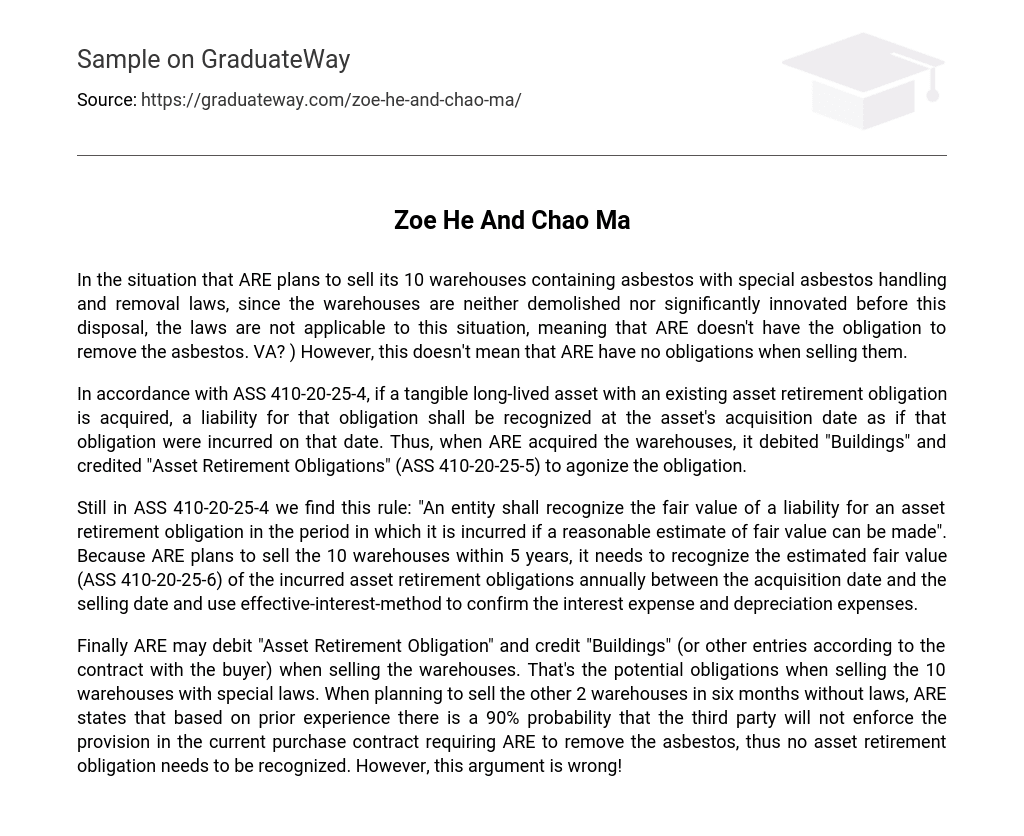In the situation that ARE plans to sell its 10 warehouses containing asbestos with special asbestos handling and removal laws, since the warehouses are neither demolished nor significantly innovated before this disposal, the laws are not applicable to this situation, meaning that ARE doesn’t have the obligation to remove the asbestos. VA? ) However, this doesn’t mean that ARE have no obligations when selling them.
In accordance with ASS 410-20-25-4, if a tangible long-lived asset with an existing asset retirement obligation is acquired, a liability for that obligation shall be recognized at the asset’s acquisition date as if that obligation were incurred on that date. Thus, when ARE acquired the warehouses, it debited “Buildings” and credited “Asset Retirement Obligations” (ASS 410-20-25-5) to agonize the obligation.
Still in ASS 410-20-25-4 we find this rule: “An entity shall recognize the fair value of a liability for an asset retirement obligation in the period in which it is incurred if a reasonable estimate of fair value can be made”. Because ARE plans to sell the 10 warehouses within 5 years, it needs to recognize the estimated fair value (ASS 410-20-25-6) of the incurred asset retirement obligations annually between the acquisition date and the selling date and use effective-interest-method to confirm the interest expense and depreciation expenses.
Finally ARE may debit “Asset Retirement Obligation” and credit “Buildings” (or other entries according to the contract with the buyer) when selling the warehouses. That’s the potential obligations when selling the 10 warehouses with special laws. When planning to sell the other 2 warehouses in six months without laws, ARE states that based on prior experience there is a 90% probability that the third party will not enforce the provision in the current purchase contract requiring ARE to remove the asbestos, thus no asset retirement obligation needs to be recognized. However, this argument is wrong!





